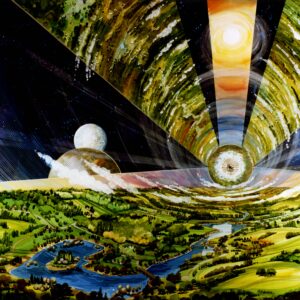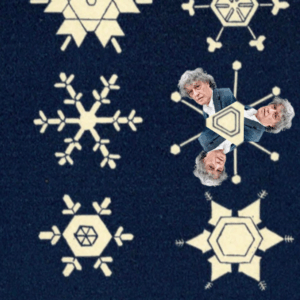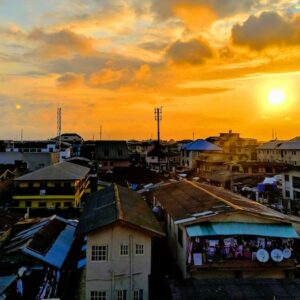
A History of Violence, From Frontier to Family
Paula Saunders Examines the Parallel Lines of History and Home
From what I could see growing up on the plains of South Dakota, aggression was inherent in the natural order. There was the continual fight against drought, flood, crop failure, and temperatures so bitterly cold that even sheltered livestock froze to death. Its awesome beauty aside, the earth didn’t seem to care who lived or died. There was, going on right in front of me, a constant battle for survival. We were in a place that required a type of work and striving—inherited from one generation to the next—where winning or losing, success or failure, could mean life or death. Because it was possible: you could lose everything.
I came to feel that life was marked most prominently by the need for human aggression. You had to be strong; you had to be tough and determined; you had to be willing to fight for yourself. Of course there were blue skies, clear streams, pine-filled air, gentle rain showers with rainbows arching from the Badlands on one end of the open horizon to the Black Hills on the other. But for our family and for most of the people we knew, mainly there was worry. There was weather worry—the endless watching for oncoming tornadoes, hail, blizzards—crop worry, livestock worry, food worry, money worry. Added to that was the contemporary worry about children, the possibility that your child would “get in with the wrong crowd” or “get off the track.” It was the sixties and early seventies and, even in the middle of nowhere, there was suddenly a lot of trouble to get into. Where there had always been whiskey, now there was pot, acid, speed, and heroin.
Aggression seemed to be a necessary push-back against so much worry and concern, both economic and personal. But there was also an undeniable element of habit, of something inherited from a previous time. And the family seemed to be the most elemental carrier of this habitual aggression, instilling the primacy of securing and protecting oneself and one’s place over all—over others—from early on, as an inherent, necessary truth. Life was going to be a fight; you were going to have to be a fighter.
This inherited habit of aggression seemed to fester in the Midwest American psyche, turning endlessly to find a target, anything that seemed not quite right, not “up to snuff”: a kid out of step with the others, or a person with a different background, ethnicity, appearance, race. People seemed to be always on the lookout for something they might tame or improve, and felt it a duty to warn against perceived dangers from anything or anyone that didn’t fit the norm. And this overactive tendency to protect, to exclude, to segregate and weed out, had a price. For nearly everyone I knew, there had been, somewhere in their childhoods—at home or at school—the experience of some degree of violence and power turned against them, and, through this, the inward recognition and understanding of violence and aggression as power.
By violence and aggression, I mean not just the dramatic outward display of the violent cultural tendencies we see all around us—in our love of guns, our demeaning politics, our school shootings (which we’ve now tolerated to the point of having to confess our acceptance of the resultant deaths of our own children)—but even, and at the most basic level, the general tenor of our smallest daily interactions: what I would call the seeds.
*
My novel, The Distance Home, is based on the story of my brother and I growing up in South Dakota, and of our family life—how it influenced us and contributed to shaping the people we became. Our father and grandfather were both cattle traders, the old-fashioned kind: driving long distances, meeting ranchers, looking at livestock. Through a series of events, my brother and I became fairly serious students of ballet. There happened to be a woman in Rapid City who’d been a part of the diaspora of Ballet Russe, and, almost unimaginably, she had started a ballet school there in the Black Hills.
“This American inheritance of aggression and violence is still with us, playing out in our families, our corporations, our politics, our interactions with the world at large every day.”
Given the culture of the Great Plains, along with the prejudices and expectations within our family, this was, of course, easier for me than it was for my brother. (He was likely one of the first male ballet dancers not only in South Dakota, but across a number of states: Wyoming, Nebraska, North Dakota, Montana.) So in our case, there was the suddenly evident violence of family preferences (of supporting one child over the other—me over my brother), there was the violence of the resultant backlash between our parents (each fighting for what they felt was right), and there was the violence of the many thoughtless, hurtful exchanges between them, each of which influenced our days and, for both my brother and myself, changed the course of our lives.
In the end, after much turmoil and misdirection, my brother turned to drugs and alcohol, which became a lifetime struggle for him. And after difficulties of my own, I left home early to pursue a career in ballet, going first to Phoenix, where I studied with Kelly Brown, a former American Ballet Theater dancer, then on to New York City, where I danced as an apprentice with Harkness Ballet under one of the great ballet masters of our time, David Howard.
Because of the disparate paths my brother and I ended up on in life, combined with the injustices that seemed to make up a daily refrain in our household, this family story was a complicated one for me, with a lot of attached feelings and judgments and subtleties. But I always knew that this was the material I was going to deal with, that this was what I would have to say. Because I felt from the beginning that my brother’s experience in our family pointed to important issues in the larger culture—how our ideas of winning and losing, success and failure, lead us inevitably into problems with empathy and caring for one another, and how even the smallest, whispered prejudices within a family can change a life.
The material took a long time to brew and settle, and the book took me a long time to write. I needed to be able to see these experiences from a different perspective, one less tainted by personal pain and judgment and blame, and more informed by what I came to understand as our ultimate impermanence here on earth: how the love we feel for each other can be buried by concern and circumstance, by hard feelings or long-held grudges, by habitual aggression and self-protection, until, sometimes, we can’t see it anymore, or even if we can see it, we can’t bring it into action.
*
Often, in our families, we learn to use whatever power we can marshal, not to observe and respond to the needs of others with intention and caring and tenderness, but to sidestep, to bypass, to escape, to distance ourselves by denigrating. We may begin to feel that our own lives are so big, so full of purpose, and so much in need of our tireless effort that, instead of learning to place importance on caring for one another, we learn from early on that we must use all of our will and resources for ourselves. Strength is valued; success is valued; winning is valued.
Of course, there are some who grow up in families full of caring. My own, in its way, was filled with love and concern. But I wished—as both a child and as an adult—that these things might have been more accessible, more at the fore, that they might have been encouraged and nurtured as primary elements in the family and in the culture at large.
But this is to forget, or to ignore, that we are descendants of those who starved, imprisoned, and slaughtered the native peoples we found here in America. Why? Because they occupied, and had for centuries, the land we wanted for ourselves. Yes. We had so much to do, so much to accomplish, such a great goal in mind. This is our heritage, accepted, for the most part, without apology or reparation. And as far as I can see, this American inheritance of aggression and violence is still with us, playing out in our families, our corporations, our politics, our interactions with the world at large— including the very ground we walk on and the air we breathe—every day. It is one of our most basic cultural lessons; to understand this particular self-protective stance, with all of its attendant nuances, is what it means to be an American.
Look at us. We use up as much of the world’s resources as we like—drilling, excavating, extracting, seizing, overthrowing, toppling, taking whatever we want from others, from the earth, proving our right and ownership in circles. We are great because we have it; we have it because we are great. Because we can take it, we deserve it; we deserve it because we have the power to take it, are willing to take it no matter the cost. And so the most apt description of us good Americans—the industrialized, the mechanized, the developers, the owners—comes from Toni Morrison’s Tar Baby: “…they killed everything they touched, including their own coastlines, their own hills and forests.”
As Americans, we are taught from early on that if you’re able to absorb and live this primacy of self—this narrative of vanquishing, conquest, victory, acquisition—you will survive, you will blossom; but if you are unable to learn this kind of lesson, if you reject it or cannot find the strength, cannot abide enacting your will over another, you will suffer at the hands of those who can.
That is the deal.
Either you embody the principles at play or you will be crushed by them—by others who do not value your meekness, your slowness, your kindness, your tenderness, no matter what Jesus might have said on the Mount.
*
While I was writing The Distance Home, I had two words always just to my right, posted on my bulletin board: Listen and Benefit. So it was my intention to try to write something that others could relate to from their experience, something that might illuminate a path to looking at your most subtle and difficult experiences from a different perspective, in a new, more open way.
I knew it was there in my family, the love we shared for each other, but it most often seemed buried so deep that it was inaccessible. It was lost in the aggressions and violences on all sides that seemed to make up the general tenor of our days. My hope in writing this book was to find it again—to locate the quiet spring, the source of that love and concern, to look at where it went awry, to try to trace the outlines of it—without dismissing the many difficulties or glossing over things, and to show this too-often subterranean love and connection coming up to the surface, finally, somehow, in an effort to benefit the hearts of those who might read the book.
The Distance Home is an attempt to understand what happens in this family and in our American culture, how the seeds of aggression and violence are carried and nurtured, and what it might take for us to see our way to a different definition of power— one that doesn’t set striving for dominance at the pinnacle, one that values the kindness in our eyes and the love that makes our hearts move, the love and human feeling that pulses through each of our veins. I wanted to search beyond the hurts and missed opportunities for the caring and love we all crave, and get to the core.
Because, really, there is so much love here.
Paula Saunders
Paula Saunders grew up in South Dakota. She is a graduate of the Syracuse University creative writing program, and was awarded a postgraduate Albert Schweitzer Fellowship in the Humanities at the State University of New York at Albany, under then-Schweitzer Chair, Toni Morrison. She lives in California with her husband. They have two grown daughters. (Author photo by Alena Saunders)



















